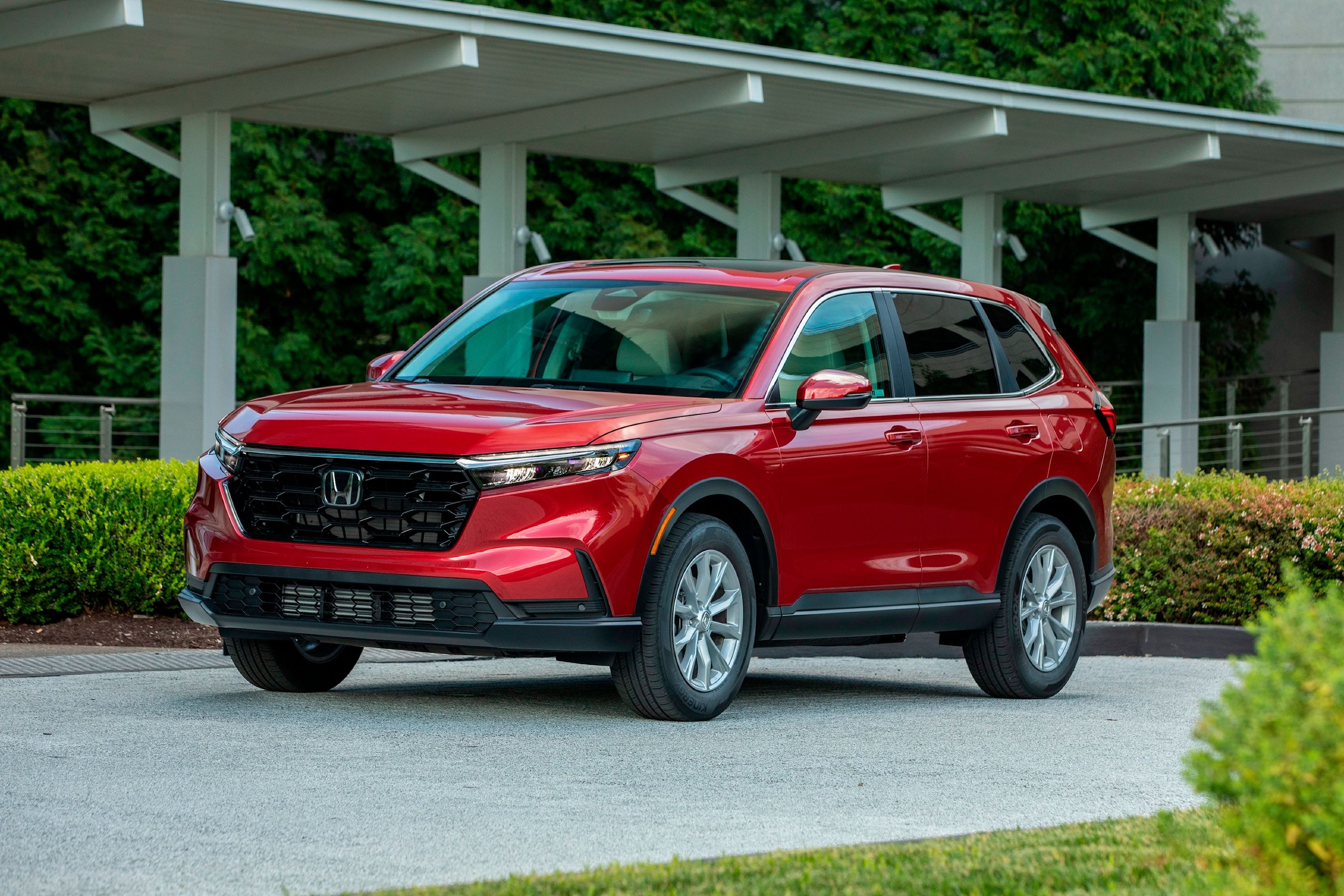
Enthusiasts malign the family crossover, but a good crossover is a godsend in the real world. It's like a station wagon that doesn't kill your back when you have to strap kids in or fill the back with groceries. The extra ride height also means you can navigate rougher tracks than a car to get to a campsite or hiking spot without damaging anything. The Honda CR-V is a quintessentially modern compact crossover, blending practicality, durability, and fuel economy while not being downright boring to drive. Following our recent test drive, we've had time to reflect on what we liked and what disappointed us, and how Honda could take the CR-V to the next level.
Cabin And Storage Space: More Than Enough Already
While the CR-V is defined as a compact crossover, it's not a cramped vehicle. There are 41.3 inches of legroom available upfront, and 40.4 inches available in the back means even long-legged teenagers aren't going to be cramped. For much smaller passengers, the car seat anchors are easily accessible. There's plenty of well thought out cubby and storage space in the cabin as well, including a deep center that's also configurable using the sliding tray. The rear cargo area boasts 39.2 cubic feet of storage space, and dropping the second row creates a total of 75.8 cubic feet for when the teenagers need a new TV or help to move into a college dorm.
Infotainment System Needs Work
The CR-V's infotainment system has all the features we expect on a well-turned-out crossover, but it falls short compared to other automaker's systems. Getting through the menus is often a clunky experience, and they're not always intuitive to sort through. Voice control is nowhere near up to par compared with what companies like Kia and Hyundai are doing. It's livable with, and using Apple CarPlay or Android Auto fixes most issues. However, neither Apple CarPlay nor Android Auto is standard on the base LX trim. That's something we find hard to forgive in this age of connectivity.
Keep The Transmission
Many automakers have come up with their own alternative names for a continuously variable transmission (CVT) as it has gained a bad rap. In the early days, CVTs had their faults and problems, but Honda nailed it early, and the current incarnation in the CR-V is excellent. Not only does it help fuel economy, but it's super smooth to drive and has a habit of making sure the RPM needle is in the right place at the right time. Honda has also not fallen into the trap of adding 'steps' to make people feel like they are driving a traditional automatic transmission-equipped vehicle, which is to be applauded.
Improve Towing Capacity
One of the big traps Americans tend to fall into is believing that if they have to tow anything at all, they need to go out and buy the biggest SUV or truck possible. This is not the case, but the CR-V's 1,500-pound limit is the lowest in its class. In comparison, the Mazda CX-5 can pull 2,000 pounds, which means it can tow something like two average sit-down jet skis with a trailer rather than just one. It's not going to be a deal-breaker for most customers, but it's a factor that will make a difference to some.
Enhance The Ride Quality Even More
The standard complaint about modern Hondas is road noise, but we didn't notice it on freeways for the 2021 model. We were also impressed by the balance between compliant suspension and body control, making the CR-V a pleasure to hustle around town. It's a step up over the previous generation, which drones on freeways and, even with larger tire walls, doesn't soak up bumps as it should. The windows on the current generation don't rattle all the time either, which is a huge complaint from the previous generation.
Base Model Needs More Features
The CR-V comes with a suite of safety features, including forward collision warning, lane departure warning, collision mitigation braking, and lane-keeping assist. It feels like Honda is just ticking boxes for the industry testing, though, as blind-spot monitoring isn't included on the base LX model. You get that when upgrading to EX trim, and, frankly, we would take it over adaptive cruise control. We've already mentioned the lack of Apple CarPlay and Android Auto on the base model. Still, it bears repeating as it is standard on the Nissan Rogue and the segment sales leading Toyota RAV4.
Almost The Complete Package
In the crossover segment, what stands out is how well rounded the CR-V is as a family car. Fuel economy is excellent when driven with care and even better with the hybrid option ticked. The gas engine is peppy, and the transmission is excellent with any power supply. Ride quality is very good, while the interior and cargo space is excellent for the CR-V's overall size. It's not as fun to drive as a Mazda CX-5, but it's not trying to. The CR-V knows what the majority of crossover buyers want from their vehicle, and delivers. With just a few adjustments, we would be outright declaring it best in class. For now, though, anyone shopping for a crossover should be taking a good look at the CR-V and comparing it with the other class leaders.
